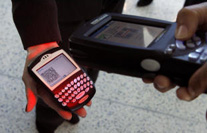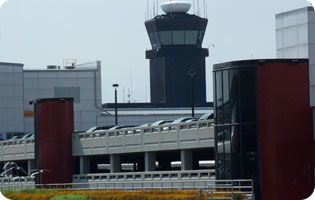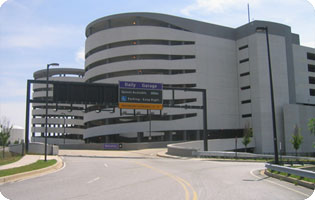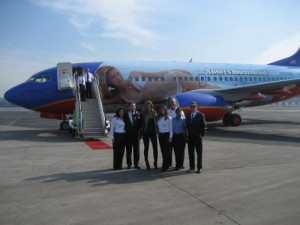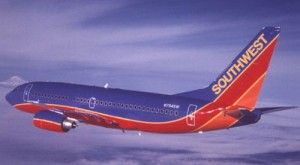
Should passengers be allowed to use their cellphones on airplanes? In the U.S. it’s not allowed. Outside the United States, some carriers already allow it.
Here’s my recent msnbc.com article on the topic. After you read it, please add your vote to the on-line survey .
(Last time I checked, 85% of voters said “On airplanes, everyone should just shut up and fly.”
What do media magnate Arianna Huffington and Hollywood heartthrob Josh Duhamel have in common? They’ve both been busted for using their cell phones on airplanes.
Over the weekend, on a New York-bound flight from Washington, D.C., Huffington reportedly failed to turn off her mobile device, inciting the ire of an unimpressed cabin mate. Last month, Josh Duhamel was escorted off a plane in New York because he wouldn’t turn off his BlackBerry.
These high-profile skirmishes are two of the latest examples in the debate over whether to allow in-flight cell phone conversations.
In Europe, the Middle East and Asia, airlines that wire planes for connectivity can install special equipment to allow passengers to use their own cell phones to make and receive calls.
Domestic airlines own about 90 percent of the world’s connected planes, but federal regulations still ban the use of in-flight mobile calls.
And while Uncle Sam doesn’t outlaw mid-air communications made using Skype or other Voice over Internet Protocol (VoIP) services, every U.S. carrier offering broadband has directed service providers such as Aircell/Gogo and Row 44 to block all voice calls and disable the VoIP function.
The disconnection may get wider.
At the end of 2010, more than 2,000 airplanes were wired for connectivity. “We expect that number to increase by 50 percent this year, to roughly 3,000 planes worldwide,” said Amy Cravens, a market analyst for In-Stat.
With more international carriers jumping on the connectivity bandwagon, much of that growth will likely be represented by jets owned by airlines planning to, or already providing, mobile phone service.
And unless something changes in the U.S., some analysts worry the only travelers who will be unreachable by mobile phone will be those flying in U.S. airspace.
International travelers chat away
After deciding that mobile phones posed no threat to safety, the European Aviation Safety Agency lifted its ban on in-flight cell phone use in 2007.
Since then, OnAir, AeroMobile and a variety of their equipment partners have been working with many international airlines to install equipment that allows mobile phone calls in addition to other entertainment and communication services.
Oman Air, Egypt Air, Libyan Airlines, Qatar Airways and Royal Jordanian are among the airlines that currently offer in-flight voice calls on many of its aircraft. British Airways allows mobile phone use on a single route: an all-business class flight between London and New York. Malaysia Airlines and others are conducting trials before committing to a formal rollout of a mobile phone service.
“Emirates is the airline everyone is watching with regard to passenger acceptance of in-flight calls; and of course, whether the service is commercially viable,” said Raymond Kollau, a market and trend analyst for Airlinetrends.com. The carrier operates 90 jets equipped with in-flight connectivity.
“People have been able to use their mobile phones on our planes for about three years now,” said Patrick Brannelly, Emirates’ vice president for product, publishing, digital and events.
Cell phone users made between 15,000 and 20,000 calls per month from Emirates flights in 2010, Brannelly said. “Each call averaged about two minutes. And during that year we had only one complaint,” he said. “Now the complaint we’re hearing from passengers is why we don’t have the mobile phone service on every aircraft.”
But not all international carriers are rushing to provide the service.
Based on feedback from a 2008 test of in-flight mobile phone service, Air France spokesperson Karen Gillo said the airline now considers mobile phone calling “a future option … [We] don’t have any current plans to implement it fleet-wide.”
Ryanair offered in-flight mobile calling for a while on 50 aircraft, Kollau said. “However, OnAir, who provided the service, decided to stop the partnership reportedly because of a dispute in revenue sharing.”
While Lufthansa recently relaunched its FlyNet onboard Internet system, which could allow voice communication, the airline’s research suggests it’s not a good idea. “Repeated surveys among our customers show that our passengers value a quiet environment without cell phone usage,” said spokesperson Christina Semmel.
Cathay Pacific Airways, though, is determined to offer voice calling to passengers. The airline offers broadband Internet service, and supports BlackBerrys and other smartphones. “When we tested this suite of services with our passengers, all were popular, but voice calling was certainly the most polarized,” said Alex McGowan, head of product for the airline. “We recognize that some passengers are against the concept, and we will ensure that their fears around the ‘nuisance’ factor are not realized.”
Calling U.S. carriers
Back in the states, the regulatory ban and public debate over in-flight phone calls continues, but opposition may be waning.
In 2005, the Bureau of Transportation Statistics asked about 1,000 households if, barring safety issues, cell phones should be allowed on airplanes. Thirty-nine percent said “definitely” or “probably.” Four years later, nearly 48 percent of respondents gave the same answers.
The “Halting Airplane Noise to Give Us Peace” Act of 2008, the so-called Hang-Up Act, was approved by the House Transportation and Infrastructure Committee but never became law. However, parts of that proposal, which sought “to establish prohibitions against voice communications using a mobile communications device on commercial airline flights” could end up in another bill that comes before the new Congress.
The Association of Flight Attendants opposes the use of cell phones in the cabin. “As first responders, we must be able to assess the cabin for any suspicious activity. If 50 passengers are on their cell phones, holding 50 separate conversations, it makes it increasingly difficult to identify any potential threat to the safety and security of the cabin,” said Veda Shook, president of AFA International.
Those phone conversations may be taking place before the jet takes off, but Mary Kirby, senior editor for Flight International, said flight attendants won’t have to deal with them in the air. “There are a finite number of communication lines — typically six to 12 lines per aircraft — which limits the number of simultaneous calls at any one time,” she said. “And aircraft noise drowns out much of the sound.”
As for passengers worried about having to listen to a seatmate yapping away on the phone, costly roaming charges usually dissuade long phone calls. And although a Southwest passenger was recently charged with misdemeanor battery for striking a teenager who didn’t turn off his iPhone when requested, Kirby said: “I am not aware of a single issue of air rage due to in-flight cell phone use.”
